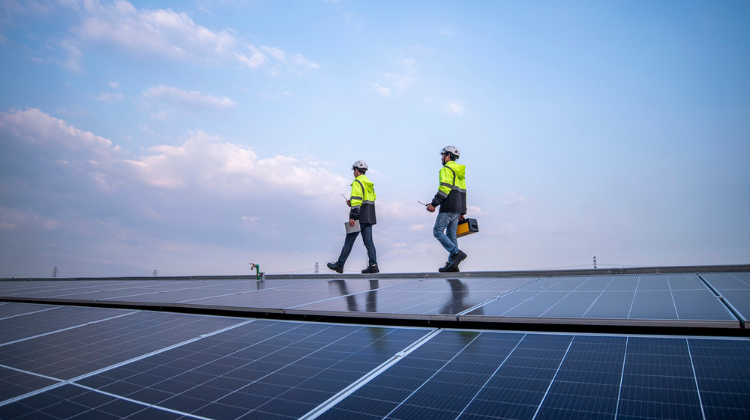The launch of the new FER2 auction in Italy, which for the first time introduces specific incentives for floating solar power on inland waters, has been welcomed with high expectations by the sector.
However, the tariff cap of €0.0728/kWh for plants over 1 MW is causing concern among developers.
“The tariff cap of €0.0728/kWh for floating systems above 1 MW is not competitive, especially when compared to the rates granted to traditional or agri-voltaic systems under other incentive frameworks,” states Michele Scoppio, Sole Administrator of Gruppo Hope.
Speaking with Strategic Energy Europe, the executive highlights that this is an emerging technology with higher costs than more mature alternatives, particularly in terms of floating structures, anchoring systems, grid connection and operational management.
He maintains that this tariff level may not cover investments, which would discourage developers and compromise the development of a national supply chain.
“If the goal is to truly support the deployment of this technology, its early-stage nature must be recognised and incentives adjusted accordingly—at least in the initial auctions,” stresses the executive from Gruppo Hope.
This concern becomes even more relevant when considering the FER2 scheme itself, which limits participation to installations on inland waters such as reservoirs, artificial lakes or irrigation ponds, explicitly excluding marine or coastal systems.
The auction distinguishes tariff ceilings of €0.090/kWh for systems under 300 kW and €0.0728/kWh for those over 1 MW, leaving projects between 300 kW and 1 MW out of this call.
Scoppio points out that the scheme is a fundamental step forward by formally recognising the technology and providing it with a national incentive mechanism.
Nevertheless, he insists that this step must be accompanied by a tariff policy that reflects the current cost structure.
“We are facing a strategic opportunity: this technology allows us to use non-contested surfaces, is compatible with existing artificial reservoirs, reduces water evaporation and improves panel efficiency through natural cooling,” he says.
Regulatory challenges and need for streamlined implementation
Despite these advantages, he stresses that the effective deployment of floating solar depends on complementing the scheme with clear and agile implementation tools, including simplified permitting and the support of regional authorities through coherent policies.
“Access to public water bodies requires state concessions that are often subject to complex and inconsistent procedures, depending on regional or local jurisdictions,” he warns. This creates uncertainty and delays in project development.
Scoppio also notes that floating solar systems require more complex engineering solutions than ground-mounted systems, both for installation and operation. In this context, he highlights the need to establish collaboration mechanisms between the public and private sectors.
“We must avoid traditional public-private partnership (PPP) models, which tend to involve lengthy and bureaucratic processes. Instead, we need more pragmatic approaches such as simplified tenders, standardised agreements or regional protocols,” he proposes.
These mechanisms would allow authorities to maintain oversight and transparency, while providing regulatory certainty and speed for developers.
Areas with the greatest potential for floating solar development
Regarding territorial potential, Scoppio believes that the greatest opportunities for floating solar in Italy lie in the Alpine reservoirs, particularly those linked to hydroelectric plants.
These infrastructures offer large surface areas, technical accessibility and existing infrastructure, making them favourable both from an energy and permitting perspective.
At the same time, he identifies Southern Italy, particularly Sicily, as a region with strong potential due to increasing water stress. There, irrigation canals and agricultural reservoirs could serve as ideal surfaces for floating systems, also helping to reduce water evaporation.
“All artificial water bodies used for agricultural, industrial or potable purposes represent concrete opportunities, provided that sustainable guidelines for multi-use management are established and that local authorities and stakeholders are actively involved from the outset,” he concludes.
In summary, FER2 offers a promising foundation for the development of floating solar technology in Italy. However, according to Scoppio, its success depends on recognising the emerging nature of this technology and providing incentives aligned with its actual cost structure.
Only then can its full potential be unlocked and a national industry consolidated in line with the country’s energy objectives.
































